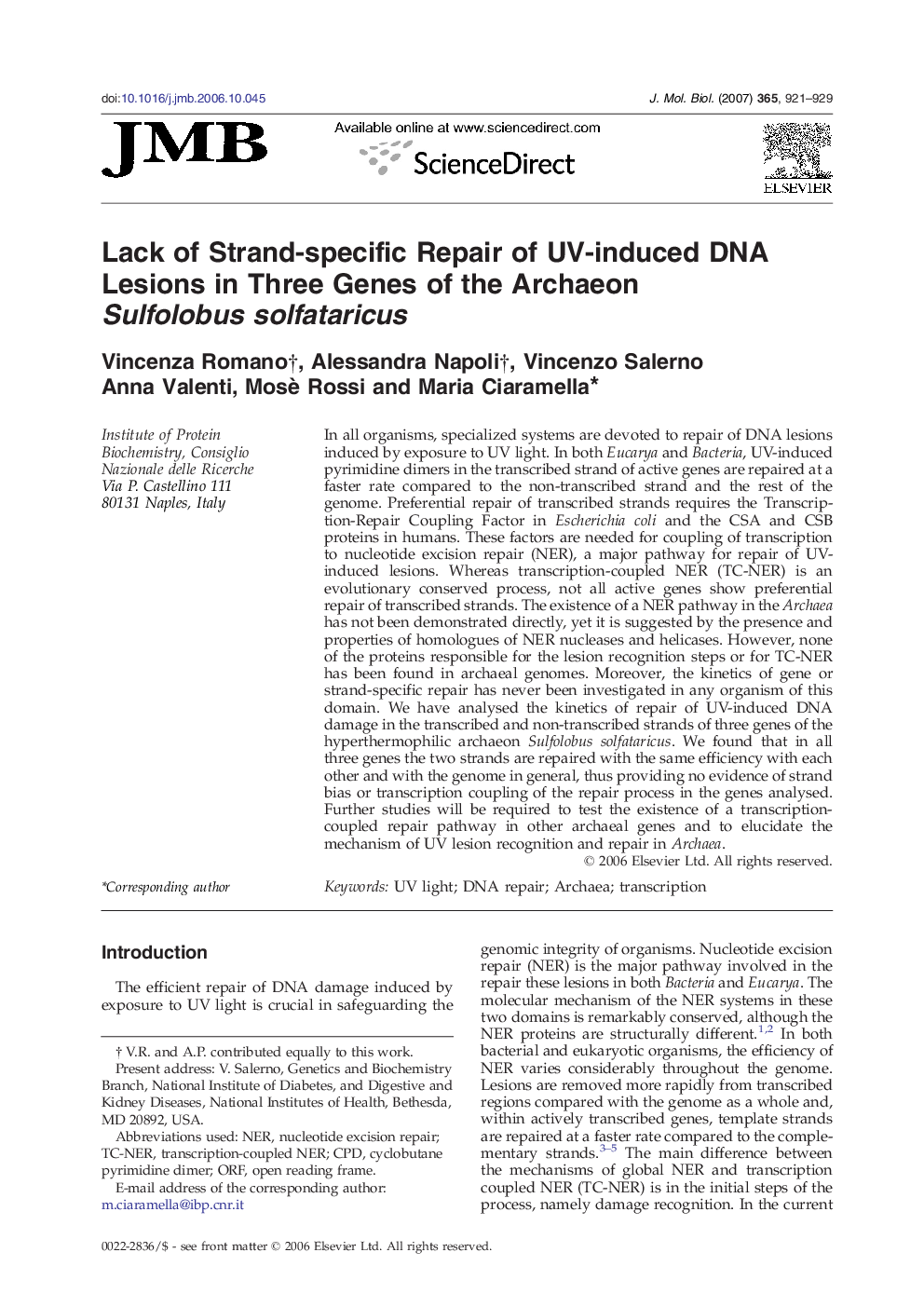| Article ID | Journal | Published Year | Pages | File Type |
|---|---|---|---|---|
| 2188913 | Journal of Molecular Biology | 2007 | 9 Pages |
In all organisms, specialized systems are devoted to repair of DNA lesions induced by exposure to UV light. In both Eucarya and Bacteria, UV-induced pyrimidine dimers in the transcribed strand of active genes are repaired at a faster rate compared to the non-transcribed strand and the rest of the genome. Preferential repair of transcribed strands requires the Transcription-Repair Coupling Factor in Escherichia coli and the CSA and CSB proteins in humans. These factors are needed for coupling of transcription to nucleotide excision repair (NER), a major pathway for repair of UV-induced lesions. Whereas transcription-coupled NER (TC-NER) is an evolutionary conserved process, not all active genes show preferential repair of transcribed strands. The existence of a NER pathway in the Archaea has not been demonstrated directly, yet it is suggested by the presence and properties of homologues of NER nucleases and helicases. However, none of the proteins responsible for the lesion recognition steps or for TC-NER has been found in archaeal genomes. Moreover, the kinetics of gene or strand-specific repair has never been investigated in any organism of this domain. We have analysed the kinetics of repair of UV-induced DNA damage in the transcribed and non-transcribed strands of three genes of the hyperthermophilic archaeon Sulfolobus solfataricus. We found that in all three genes the two strands are repaired with the same efficiency with each other and with the genome in general, thus providing no evidence of strand bias or transcription coupling of the repair process in the genes analysed. Further studies will be required to test the existence of a transcription-coupled repair pathway in other archaeal genes and to elucidate the mechanism of UV lesion recognition and repair in Archaea.
